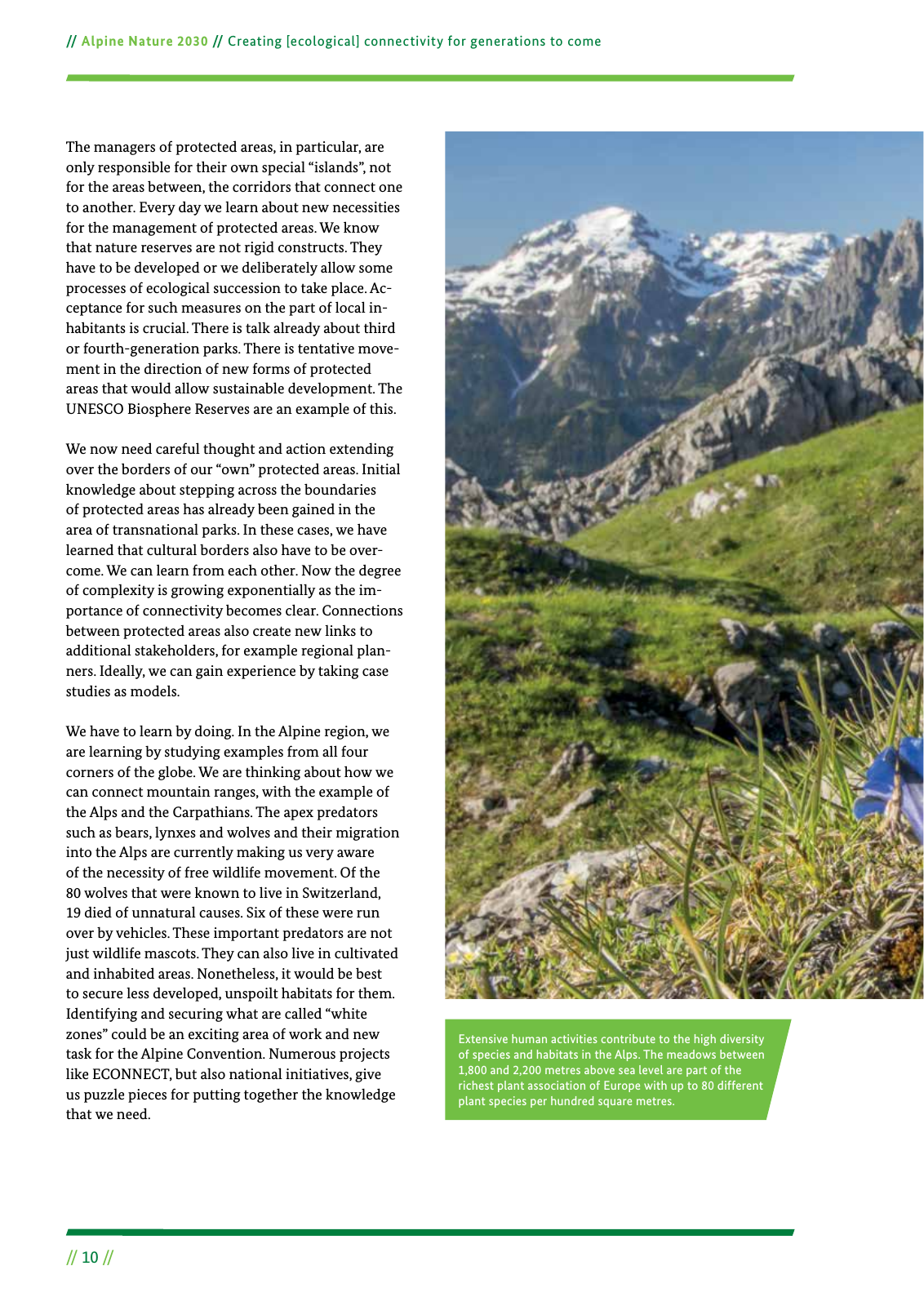The managers of protected areas in particular are only responsible for their own special islands not for the areas between the corridors that connect one to another Every day we learn about new necessities for the management of protected areas We know that nature reserves are not rigid constructs They have to be developed or we deliberately allow some processes of ecological succession to take place Ac ceptance for such measures on the part of local in habitants is crucial There is talk already about third or fourth generation parks There is tentative move ment in the direction of new forms of protected areas that would allow sustainable development The UNESCO Biosphere Reserves are an example of this We now need careful thought and action extending over the borders of our own protected areas Initial knowledge about stepping across the boundaries of protected areas has already been gained in the area of transnational parks In these cases we have learned that cultural borders also have to be over come We can learn from each other Now the degree of complexity is growing exponentially as the im portance of connectivity becomes clear Connections between protected areas also create new links to additional stakeholders for example regional plan ners Ideally we can gain experience by taking case studies as models We have to learn by doing In the Alpine region we are learning by studying examples from all four corners of the globe We are thinking about how we can connect mountain ranges with the example of the Alps and the Carpathians The apex predators such as bears lynxes and wolves and their migration into the Alps are currently making us very aware of the necessity of free wildlife movement Of the 80 wolves that were known to live in Switzerland 19 died of unnatural causes Six of these were run over by vehicles These important predators are not just wildlife mascots They can also live in cultivated and inhabited areas Nonetheless it would be best to secure less developed unspoilt habitats for them Identifying and securing what are called white zones could be an exciting area of work and new task for the Alpine Convention Numerous projects like ECONNECT but also national initiatives give us puzzle pieces for putting together the knowledge that we need Extensive human activities contribute to the high diversity of species and habitats in the Alps The meadows between 1 800 and 2 200 metres above sea level are part of the richest plant association of Europe with up to 80 different plant species per hundred square metres 10 Alpine Nature 2030 Creating ecological connectivity for generations to come

Hinweis: Dies ist eine maschinenlesbare No-Flash Ansicht.
Klicken Sie hier um zur Online-Version zu gelangen.
Klicken Sie hier um zur Online-Version zu gelangen.